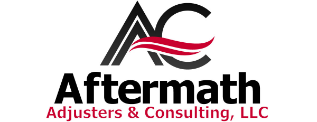Unfortunately, many homeowners are not prepared to deal with property damage. There is a saying that says Proper Prior Planning Prevents Poor Performance. The same is true when it comes to dealing with property loss. Proper planning allows homeowners to discover issues before they have a problem. This gives them times to fix the issues so that if damage occurs, they have the needed documentation and insurance in place.
At Aftermath Adjusters & Consulting, LLC, we recommend that you perform an annual – or even semi-annual checkup that covers the following three areas. Doing so will help any future insurance claims be more successful.
#1: Look For and Remedy Maintenance Issues
Did you know that having maintenance issues can allow your insurance company to deny a claim? It’s true. You see, your policy states that you must maintain your home, fixing the normal wear and tear. If you fail to do this, you are also failing to abide by the terms of your insurance contract. So, when you put in a claim, the insurer has every right to deny it.
Let’s look at an example. A mild tropical depression tears a few shingles off your roof, but you choose not to fix them. Then, while you are away visiting family in another state, another tropical storm dumps inches of rain, and your home receives extensive water damage because the water seeped into the attic space and through the ceiling of your kitchen and dining room. You file an insurance claim, but the insurance company denies that claim. They state that if you had repaired the missing shingles, you wouldn’t have any damage. Now, instead of just the cost of replacing a few shingles, you have to pay for the water damage as well.
When inspecting your home, look at the following:
- Roof: Shingles are no sinking or curling; there is no mold or rot; the soffits and fascia show no decay; any flashing for chimneys or vent pipes is tight.
- Gutters: Clean; no rust; attached to the home; water in downspouts moves away from the foundation
- Siding, exterior, and foundation: Wood is not touching the ground; foundation shows no stains, cracks, sagging; siding is tight; vegetation is clearly away from exterior of home
- Windows and doors: Frames are intact; joints are together and caulked; glass is not broken; screens are intact
- Property: Standing water can be a sign of sinkholes; tree branches do not touch the home; other structures show no damage
- Attic: Look for decay and water stains; check that ventilation is sufficient
- Other rooms in the house: Check for water stains; fix broken electrical outlets; note other issues
#2: Create and Update Your Personal Property Inventory
If you don’t have a personal property inventory, you need to create one. Then, at least yearly, you should update this inventory to reflect new purchases. The inventory should list your possessions, and for those possession, have as much of the following as possible:
- Photo or video
- Receipts
- Warranties
- Instruction manuals
- Appraisals
- Serial numbers
Be sure to store this inventory in a safe place. We recommend an off-site location such as a safety deposit box, an emailed list to a member of the family, or even a storage link in the cloud.
#3: Reassess Your Home’s Value
Never assume that you have enough insurance, because in many cases, US homeowners do not. Here are a few reasons that the insurance you have may not be enough:
- The home values in the area have increased
- You have more possessions now than you did when you took out your insurance policy
- The cost of building materials has increased
- You remodeled or added on to your home, increasing its value
Aftermath Adjusters recommends that homeowners review their policy regularly. It’s the only sure way to know that you have enough coverage.
Don’t wait until a disaster strikes to find out that you aren’t adequately prepared. By following these three steps, you can be more confident that if damage occurs, you will be ready. If you need help reviewing your policy, feel free to reach out. Aftermath Adjusters & Consulting offers a free policy review to help you know that you are on track. Call us today.









